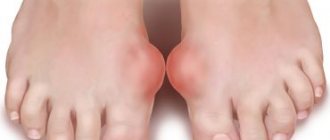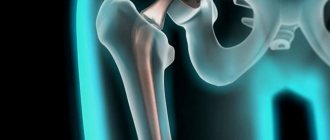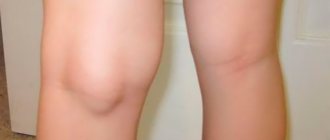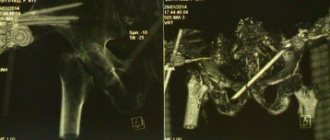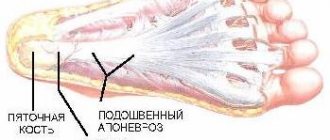What is hand osteoporosis?
A decrease in bone density occurs due to impaired accumulation and absorption of calcium by the body.
We are talking about a disease of the skeletal system that affects the hands. The disease causes a significant decrease in bone density, which leads to increased fragility.
Patients with osteoporosis of the joints of the hands can be injured even with the slightest force. This may be a slight blow or lifting of minor loads, after which a fracture of the hand occurs.
The main cause of this pathology is impaired accumulation and absorption of calcium by the body. The development of osteoporosis can occur under the influence of external factors or be a consequence of any disease. The disease is characterized by hidden manifestations in the initial stages, which greatly complicates its timely diagnosis.
Causes
Osteoporosis of the hands occurs against the background of disturbances in the metabolic processes of phosphorus and calcium with their increased removal from the body. Thus, the amount of macroelements is not enough to form a strong skeletal system.
The main causes of this disease are:
- hormonal imbalance;
- age-related changes;
- diseases of the endocrine glands;
- genetic predisposition;
- long-term use of certain medications;
- enzyme deficiency;
- diseases of the hematopoietic system;
- oncological processes;
- diseases of a rheumatic nature;
- chronic renal failure.
In addition, the following factors can provoke this disease:
- low physical activity;
- alcoholism;
- smoking;
- poor nutrition, overeating or undereating;
- drinking strong coffee in large quantities.
Prevention
How to prevent osteoporosis or stop its further progression? The following rules must be followed:
- It is necessary to limit the consumption of coffee, tea, and alcoholic beverages as much as possible.
- It is necessary that there be some physical activity every day.
- It is recommended to engage in physical activity and sports, but avoid too intense exercise.
- Limit consumption of foods containing phosphorus. This is red meat, any sweet drinks with gas.
- A balanced diet that involves eating foods containing large amounts of calcium. These include milk, kefir, cheese, cottage cheese, and broccoli.
You should also not forget about a preventive examination of the body, which will allow you to promptly identify problems with the functioning of the motor system and prevent life-threatening consequences.
Types of osteoporosis of the hands
In advanced stages of osteoporosis, it is necessary to replace diseased joints
Hand osteoporosis is classified by modern medicine according to a number of criteria.
Based on prevalence, there are two types of disease:
- Focal. The lesion affects individual fragments of bone tissue, forming lesions of various sizes.
- Diffuse. It is characterized by the involvement of the entire skeletal system in the pathological process. This form has a more severe course than the previous one, and in advanced stages requires joint replacement surgery.
As the disease progresses, it goes through four stages. In the first two, it can be easily cured with conservative methods, but is practically undetectable and has no pronounced clinical symptoms. Noticeable symptoms appear when the disease reaches the third stage of its development, leading to severe and irreversible consequences.
Let's look at the stages of the disease in more detail:
- The first stage is characterized by the absence of clinical symptoms and is not detected on x-ray.
- Second stage. There may be slight discomfort in the area of the affected joints, which most patients attribute to fatigue. The disease still does not appear on x-rays. Changes in the bone structure at this stage can only be detected through densitometry.
- Third stage. Characteristic pains appear, which can be present not only during vigorous activity, but also at rest. The patient suffers from increased fatigue. The first external manifestations of the disease may be present. The changes become irreversible. Bones become brittle.
- Fourth stage. As a rule, at this stage the patient is assigned a disability. Conservative therapy is used only to curb the progress of the disease. To return to a full life, the patient needs surgical intervention.
Depending on the cause of the disease, it can be divided into the following types:
- Corticosteroid. This form of the disease manifests itself due to long-term use of hormones.
- Postmenopausal. It appears in females as a result of a deficiency of sex hormones.
- Senile. The development of osteoporosis of the hands occurs due to the general aging of the body. As a rule, this form of the disease manifests itself in people over 65 years of age.
- Idiopathic. This form of the disease can develop in any person, regardless of age and gender. The causes of the disease are not fully understood.
- Secondary. Develops against the background of pathologies such as diabetes, hypothyroidism, oncology, etc.
Symptoms
Osteoporosis is dangerous because its first signs are usually invisible and the disease develops for a long time with virtually no symptoms. The first signs of osteoporosis may be:
- Pain in bones, back, limbs, especially when the weather changes. The pain is aching in nature, and patients often attribute it to normal fatigue.
- Decrease in height, change in posture - stooping, hunching.
- Reduced mobility of the spine due to compression and deformation of the vertebrae.
- Cramps in the muscles of the arms and legs, especially at night.
- Nail changes. Nails become brittle, brittle, begin to peel, and change color.
- Changes in teeth: increased formation of plaque, the appearance of periodontal disease.
- Ultimately, pathological fractures occur. These are fractures that do not occur with a strong impact, but during a slight load on the bone: an awkward movement, coughing, sneezing, leaning on an arm or leg, a fall (not from a height).
What happens if the disease is not treated?
Untreated osteoporosis can lead to hand disability
Osteoporosis of the hands requires prompt treatment, since as the disease progresses, the pathological process affects more and more tissue, causing irreversible consequences. In the final stages, this disease is practically untreatable and requires surgical intervention.
If the patient does not receive adequate treatment for osteoporosis of the fingers, the consequences will be as follows:
- constant pain that occurs even at rest will not allow the patient to make finger movements necessary for everyday life and work;
- over time, the bones will become so brittle that even a slight impact will cause a fracture;
- the patient’s general condition will worsen, fatigue and weakness will appear;
- Against the background of physical discomfort, the emotional state of the patient will also deteriorate significantly - depression and apathy will occur.
Diagnostics
To accurately determine the development of osteoporosis of the hands, the following methods are used:
- Radiography. Allows you to examine changes in bone structures.
- Densitometry. Study of bone tissue density.
- MRI and CT. The techniques show the internal state of the affected areas.
- Biochemical tests of blood and urine. Allows you to determine the rate of excretion of calcium and phosphorus from the body.
- Genetic research. Performed when gene mutations are suspected.
Treatment of osteoporosis of the hands
Physiotherapy affects bone tissue and enhances the effect of drug treatment
Since this pathology can have a direct impact on the patient’s life as a whole, several specialists are involved in its elimination:
- endocrinologist;
- rheumatologist;
- traumatologist;
- orthopedist.
When treating osteoporosis of the hands, an integrated approach is practiced, which includes the following techniques:
- Drug therapy. Medicines help keep the body in good shape, enriching bone structures with calcium and phosphorus.
- Physiotherapeutic procedures. They are used for local effects on affected tissues and can significantly enhance the effect of therapy.
- Exercise therapy. The development of joints and tendons, as well as an increase in muscle mass, can in some way compensate for the increased fragility of bones.
- Diet therapy. Nutrition is prescribed to each patient individually and involves the exclusion of potentially harmful foods from the diet. The diet is aimed at enriching bones with calcium and beneficial microelements.
- Folk methods. Traditional medicine can enhance the effect of official drugs. But they should be taken only as prescribed by a doctor. For example, eggshells contain a lot of calcium, which is ground into powder and taken according to an individual course.
- Massage. Such procedures can alleviate the general condition of the patient, but they should only be performed by a professional. A special feature of massage for osteoporosis of the hands is its gentle effect on the affected bones and joints.
- Joint replacement. This is a last resort measure for the treatment of osteoporosis of the hand, which is prescribed in the most advanced cases. If the damage has spread to the entire joint, it must be replaced during surgery.
Lifestyle modification
Treatment and prevention of osteoporosis is impossible without changing lifestyle and getting rid of risk factors for this disease and its complications. Drug or other treatments for osteoporosis are important and should be complemented by lifestyle modifications.
Key recommendations from the World Health Organization for patients at risk of osteoporotic fractures:
- maintaining a permanent active lifestyle;
- sufficient exposure to the sun and fresh air;
- cessation of smoking and excessive alcohol consumption;
- compliance with individual standards for the content of calcium and vitamin D in food, and, if necessary, replenishing the deficiency with medications;
- maintain a body mass index of at least 19 kg/m2, since low body weight is a serious risk of fractures;
- maintain a healthy sleep schedule;
- regularly visit seaside resorts and sanatoriums.
With a well-designed treatment program that takes into account all the individual characteristics of the patient, the cause of impaired bone mineralization and risk factors, as well as with adequate preventive measures, the progress of osteoporosis can be significantly slowed down and sometimes even stopped.



